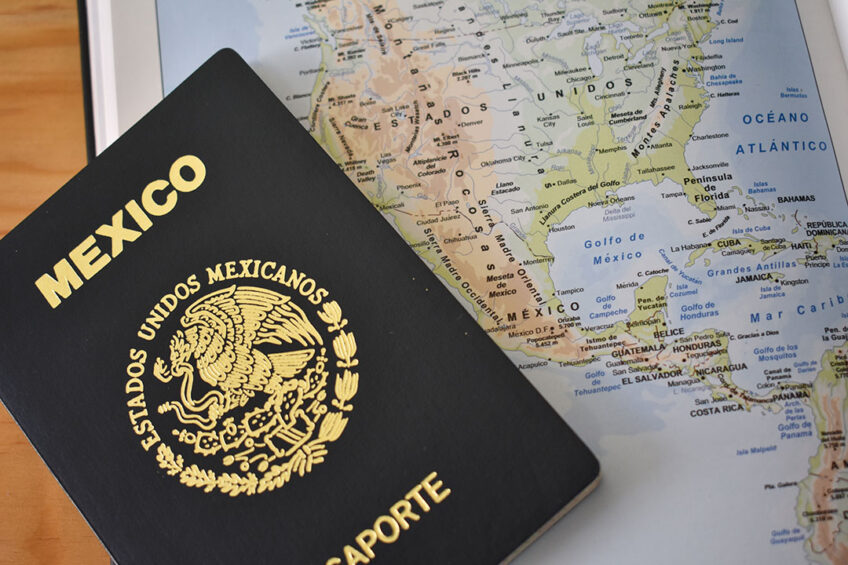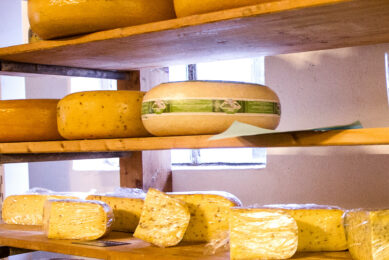Covid-19, US-Canada: Preventing migrant labour disruption

Each year in the United States and Canada, tens of thousands of temporary foreign workers are brought in to work in both countries’ dairy, egg and meat processing plants and on farms. This year, due to COVID-19, there are serious concerns that the same number of workers will not be allowed to enter, putting food production, business survival and food security at risk.
It is vital to ensure work permissions continue, while addressing shortages of dairy products due to panic buying, and drops in demand due to Mexico’s de-valued Peso. Although dairy cattle are not directly impacted by the Coronavirus disease 2019 (Covid-19), the global pandemic does affect dairy production in a multitude of different ways.

In the USA and Canada, like in many other places in the world, society lockdowns cause a sudden shortage of foreign workers. It’s a situation that changes by the day, but here is the latest information:
United States
On Tuesday March 24, the US State Department announced it would suspend processing of temporary work visas in Mexico because of COVID-19. By Friday 27th, the suspension was removed.
Food supply chains at risk
This was at least partly due to a letter sent to State Department, the Department of Labor and the Department of Homeland Security, from elected officials from North Carolina and signed by over 100 members of Congress. It called for visa processing in Mexico to be resumed because the suspension was putting the nation’s food supply chains at risk. On Friday afternoon, Secretary of State Mike Pompeo tweeted that “H-2 visas are essential to our economy and food security. I am taking decisive action to keep visas flowing.”
The US dairy, poultry, pork, horticulture sectors and more rely to different degrees on foreign workers, which they access through the use of ‘H-2A’ seasonal visas or ‘TN’ visas. TN stands for ‘Trade NAFTA,’ and is a special US non-immigrant worker classification that offers expedited authorisation to workers from Canada and Mexico, as outlined in the NAFTA (North American Free Trade Agreement). These workers are needed for a variety of reasons, chief among them that not nearly enough American workers live close to farms or packing plants, and the wages and benefits are not considered adequate.
Several agricultural groups, including the National Milk Producers Federation (NMPF), are calling for reform to the visa system so that industry labour needs can better be met. NMPF stated in early March that it’s hopeful “a Senate bill will be introduced this spring containing changes to the H-2A visa program so it can work for dairy,” adding that “Ag labour reform is crucial for future prosperity.”
Dairy farmers face labour shortages
The NMPF states on its website that “dairy farmers are facing a labour shortage while forced to navigate the deeply uncertain and volatile reality undergirding agriculture labor in the U.S…Uncertainty on the farm harms individuals and communities that rely on farms for jobs and as cornerstones of the local community as well as businesses and workers in the food system chain that depend on reliable food production. Families and consumers will be harmed as food prices increase in line with uncertainty on the farm increasing. As more and more American farms shut down due to the labour crisis, we will become dependent on foreign producers for our food supply.”
Canada
The Dairy Processors Association of Canada, notes on its website that currently, dairy processors are reporting no major disruptions to the dairy supply chain due to COVID-19. It adds that “by nature of a food processing plant, very strict hygienic measures are already in place to support federal and provincial food safety requirements. Many processors are enhancing health measures to protect those essential staff who come to work every day in order to serve Canadians.”
In Canada, the Ministry responsible for the Temporary Foreign Worker Program, which handles all foreign worker permissions, is Employment and Social Development Canada. They could not be reached for further info on this. However, Jean-Michel Laurin, president & CEO of the Canadian Poultry & Egg Processors Council, provided some overall insight to the national temporary foreign worker situation. He reported discussions were held last week with the Canadian Federation of Agriculture, the Quebec farmer’s union and Agriculture & Agri-food Canada (AAFC) relating to strict protocols to which AAFC expects all farming and food processing sectors to adhere with regard to foreign workers.
Medical screening
This likely includes medical screening before and after the flight to Canada, private transportation to accommodations and a 14-day quarantine period. Laurin says there may also be the opportunity for foreign agricultural sector workers now in Canada to extend their stay if they are willing and able to do so.
RFID system to manage worker movements
Meanwhile, Joel Sotomayor, the co-founder of Ontario-based Transport Genie, is working (through his other company JRS Virtual Studio) with Dr Karen Hand at Strategic Solutions Group to produce technology that can help manage foreign worker health and movement.
The companies are ready to pilot an RFID-based system so that temporary foreign worker movements could be managed in order to quickly get COVID-19 medical attention for them and/or take quarantine measures. Workers would wear RFID bracelets and RFID readers would be placed at various points in processing plants or on farms. Transport Genie co-founder
Sotomayor says this may save a processing plant or farm from having to shut down completely and noted that it may also enable workers to be shared among farms, depending on available skill sets and needs.
Demands shift for dairy
In Canada and the US, the COVID-19 pandemic has led to ‘panic buying’ of groceries as shoppers are afraid of possible future food shortages. Shoppers also want to shop less often to reduce the risk of infection, so they buy more per grocery store visit. In addition, the closing of many restaurants (although many still offer take-away services) is another factor which is greatly impacting the dairy sector.
Similarly to demand for eggs in Canada, demand for dairy products at retail stores has therefore soared, but demand from restaurants and other food service providers has dropped. On Thursday March 26th, leaders at Quebec-based major dairy processor Saputo reported that they will be watching over the next couple of weeks to see what new retail buying patterns will emerge.
Saputo also reports that demand is increasing because of the US-Canada border closure (to all non-essential travel) due to COVID-19. Some Canadian consumers who live near the border and regularly crossed to access cheaper groceries and petrol cannot do so at present.
In Canada, the price of milk and other dairy products is very stable due to the supply-management system and not generally affect by demand. However, in the US, dairy product prices fluctuate a great deal. Indeed, greater demand due to COVID-19 should bring more profit to farmers and processors and some processors in California’s dairy belt are operating at production rates well above normal.
However, due to the economic ramifications of the pandemic, the Mexican Peso has recently sharply dropped in value, making many US products such as dairy more expensive to import. Mexico is the number one export market for the US dairy sector, accounting for one-quarter of all dairy exports (chiefly milk powder and cheese).
On March 24th, NMPF submitted a letter to the US Agriculture Secretary, letting it be known that in the wake of COVID-19, some dairy farmers or processing plants “may be forced to dispose of milk due to transportation or logistical disruptions or if demand from domestic or international markets diminishes.”
“Given the potential for supply chain interruptions as seasonal milk production peaks this spring and many schools remain closed, elements of existing USDA programs could provide the basis for a means to compensate farmers or processors, potentially with an incentive to donate milk when possible.”
However, the federal government recently announced an economic relief package related to COVID-19 ($2 trillion USD in total) with almost $24 billion for agriculture, including a $9.5 billion emergency fund for producers such as dairy farmers.
Join 13,000+ subscribers
Subscribe to our newsletter to stay updated about all the need-to-know content in the dairy sector, two times a week.










